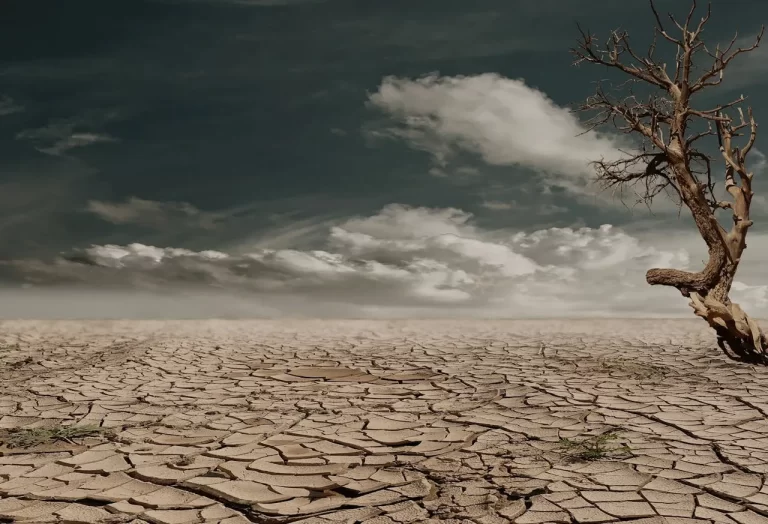Key Points:
- Rising temperatures and shifting weather patterns are driving the spread of mosquito- and tick-borne diseases into new regions.
- Flooding and water scarcity are increasing outbreaks of waterborne illnesses like cholera and hepatitis A.
- Deforestation and habitat loss are fueling zoonotic disease spillovers, including Ebola and COVID-19.
- Low-resource communities face the greatest risks as health systems struggle to adapt.
Mosquitoes Follow the Heat into New Territories
In the highlands of Ethiopia, where malaria was once rare due to cooler temperatures, health professionals are now seeing a troubling rise in cases. A 2024 study confirmed that mosquitoes are moving into higher altitudes and previously malaria-free zones as temperatures warm – even small increases are enough to expand their range.
It’s one of many examples showing how climate change is not only reshaping our physical environment – but also redrawing the map of infectious disease.
Climate Change Is Reshaping Global Disease Risk
Infectious diseases evolve alongside their environment – and today’s climate and ecosystems are changing faster than historical norms. Vector-borne illnesses like malaria, dengue, and Lyme disease are appearing in new regions. Waterborne outbreaks surge after floods or droughts disrupt sanitation. And zoonotic diseases – those jumping from animals to humans – are more likely as ecosystems are stressed and fragmented.
According to the World Health Organization (WHO), climate change affects a wide range of health determinants, including clean air, safe drinking water, food security, and shelter stability – making the global population more vulnerable to disease overall.
Environmental Shifts That Accelerate Disease Spread
Rising Temperatures Fuel Insect-Borne Outbreaks
Warmer conditions speed up the reproductive cycles of mosquitoes and ticks – and the replication of viruses within them. This means diseases like dengue, Zika, and chikungunya are now being reported in places once considered too cool for transmission, including parts of Europe and the southern U.S..
Lyme disease, transmitted by ticks, has steadily expanded northward into Canada and westward across the U.S., closely tracking warming temperature zones. A 2025 Lancet Countdown analysis reported that the climate-defined transmission potential for dengue has surged by nearly 66% in Latin America since the 1950s, driven by rising temperatures and shifting rainfall patterns. These conditions are expanding mosquito habitats and increasing the risk of outbreaks in regions that were once considered low-risk.
Extreme Weather Events Amplify Waterborne Threats
Intense rainfall and flooding overwhelm sewage systems, pollute freshwater sources, and accelerate the spread of diseases like cholera, hepatitis A, and leptospirosis. These conditions are especially dangerous in regions with limited infrastructure.
In Mozambique and Bangladesh, for example, floodwaters often bring surges of diarrheal and gastrointestinal illness, as seen after Cyclone Idai and other extreme weather events. On the flip side, droughts may force people to rely on unsafe water sources – contributing to illness from contaminated supplies.
Deforestation Increases Human-Animal Pathogen Contact
The majority of emerging infectious diseases originate in animals – and deforestation increases the chances that those pathogens reach humans. As forests are cleared for agriculture or mining, wildlife habitats are lost, increasing interaction between wildlife, humans, and livestock.
Ebola outbreaks in Central and West Africa, the Nipah virus in Southeast Asia, and even the likely zoonotic origins of COVID-19 all highlight this risk. A 2021 article emphasised that biodiversity loss from climate and land use change is a primary driver of zoonotic spillover.
Urban Growth and Displacement Drive Transmission
Climate-induced migration – caused by sea level rise, desertification, and crop failure – often leads to overcrowding in urban areas or refugee camps. These dense environments strain health systems and sanitation, creating conditions that facilitate respiratory infections, gastrointestinal disease, and viral outbreaks.
Increased urbanisation, particularly in low-income countries, is outpacing public health infrastructure, according to the Intergovernmental Panel on Climate Change, exacerbating the spread of infectious diseases.
Adaptation Strategies for a Warmer, Riskier World
1. Early-Warning Systems Backed by Climate Data
Countries like Rwanda and Sri Lanka are using satellite data and weather forecasts to anticipate malaria and dengue outbreaks before they occur.
2. Disease Surveillance That Tracks Climate Trends
Strengthening disease monitoring systems – especially in rural or underserved regions – can help detect outbreaks earlier and link them to environmental signals.
3. Resilient Infrastructure to Withstand Health Shocks
Building sanitation systems that can endure floods and droughts is crucial. Solar-powered clinics and rainwater catchment systems can also help vulnerable communities adapt.
4. Global Frameworks That Unite Health and Environment
Initiatives like the One Health approach – endorsed by WHO, FAO, and UNEP – recognise the interdependence of human, animal, and ecosystem health and aim to coordinate disease prevention efforts across sectors.
5. Community-Based Prevention and Resilience
From mosquito-proofing homes to improving hygiene and access to vaccines, empowering communities with tools and knowledge can reduce disease vulnerability even before major investments arrive.
Brazil’s Dengue Surge: A Climate Warning Sign
In 2024, Brazil recorded over 1.8 million dengue cases in just the first half of the year – a nearly 300% increase from 2023. Health officials linked the spike to a record-breaking hot summer, erratic rainfall, and poor urban drainage that created standing water – the perfect breeding ground for Aedes aegypti mosquitoes.
Despite national campaigns for vector control, experts stress that without addressing the underlying climate conditions, the outbreaks will continue.
Linking Climate and Public Health for a Safer Future
Climate change is not just an environmental problem – it’s a public health emergency. By integrating climate awareness into public health planning, we have a chance to build more resilient, responsive systems.
Health professionals, policymakers, and everyday individuals all have a role to play. The more we recognise the connections between climate and health, the better we can prevent outbreaks before they start – and protect vulnerable communities from future risks.
Your Next Step
Stay informed about how climate and health intersect in your community. Support local disease prevention programs, advocate for stronger public health infrastructure, and adopt sustainable practices that reduce environmental and infectious risks alike.
This blog post aims to be informational and should not replace professional health advice. Always consult with a health professional for personalised advice.
Subscribe for Free for more insightful health articles tailored to your needs.
References
- Zong L, Ngarukiyimana JP, Yang Y, Steve, Zhou Y, Wang M, et al. Malaria transmission risk is projected to increase in the highlands of Western and Northern Rwanda. Communications Earth & Environment. 2024 Oct 3;5(1).
- Lim A, Shearer FM, Sewalk K, Pigott DM, Clarke J, Ghouse A, et al. The overlapping global distribution of dengue, chikungunya, Zika and yellow fever. Nature Communications [Internet]. 2025 Apr 10;16(1). Available from: https://www.nature.com/articles/s41467-025-58609-5
- Hartinger SM, Palmeiro-Silva Y, Llerena-Cayo C, Araujo Palharini RS, García-Witulski C, Salas MF, et al. The 2025 Lancet Countdown Latin America report: moving from promises to equitable climate action for a prosperous future. The Lancet Regional Health – Americas [Internet]. 2025 Oct 29;101276. Available from: https://www.sciencedirect.com/science/article/pii/S2667193X25002868
- Keesing F, Ostfeld RS. Impacts of biodiversity and biodiversity loss on zoonotic diseases. Proceedings of the National Academy of Sciences [Internet]. 2021 Apr 5;118(17). Available from: https://www.pnas.org/content/pnas/118/17/e2023540118.full.pdf





Interesting read—climate change really affects disease spread. Good that people are talking about it
Glad more people are talking about climate and illness
It’s great this article highlights how rising temps can change illness patterns